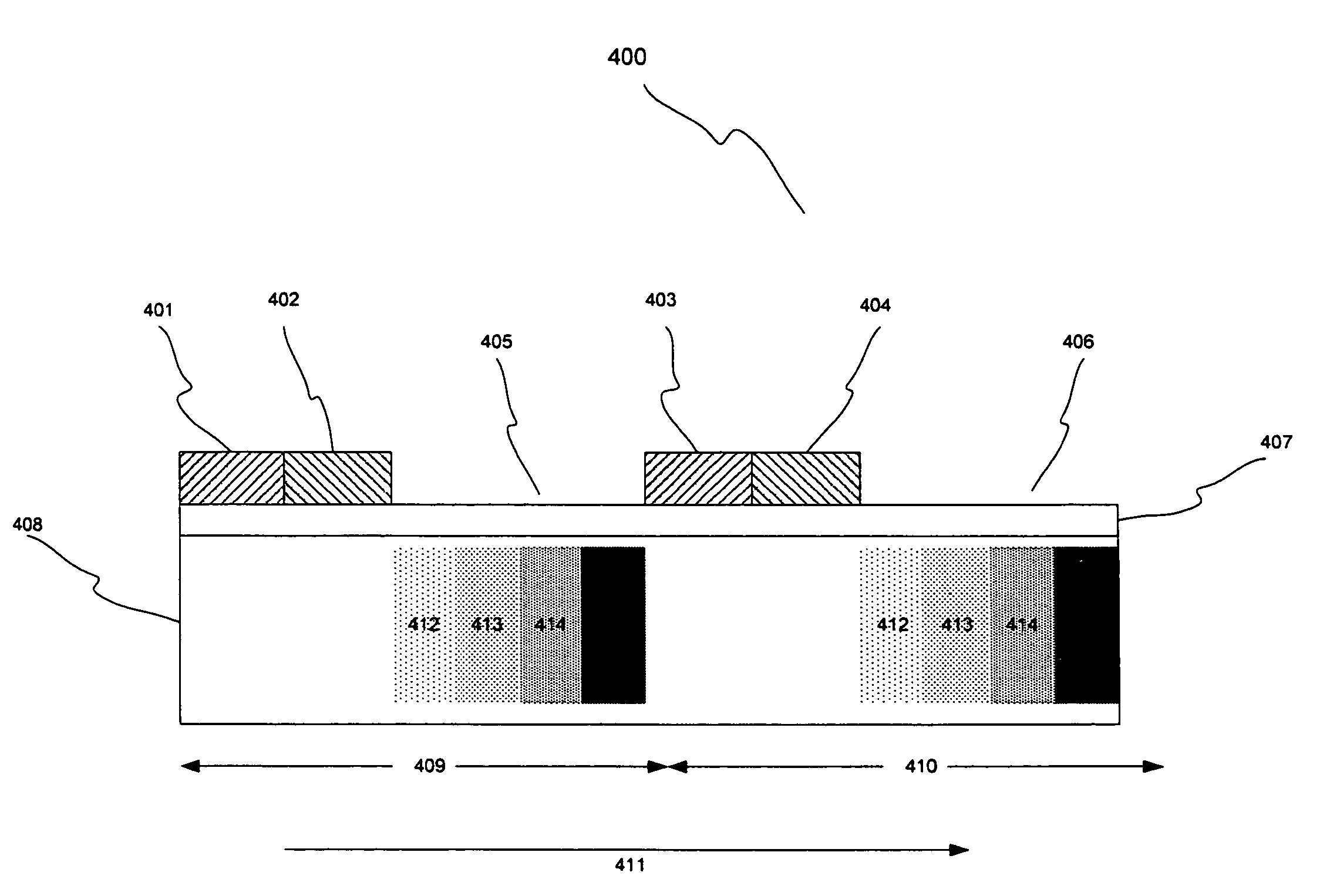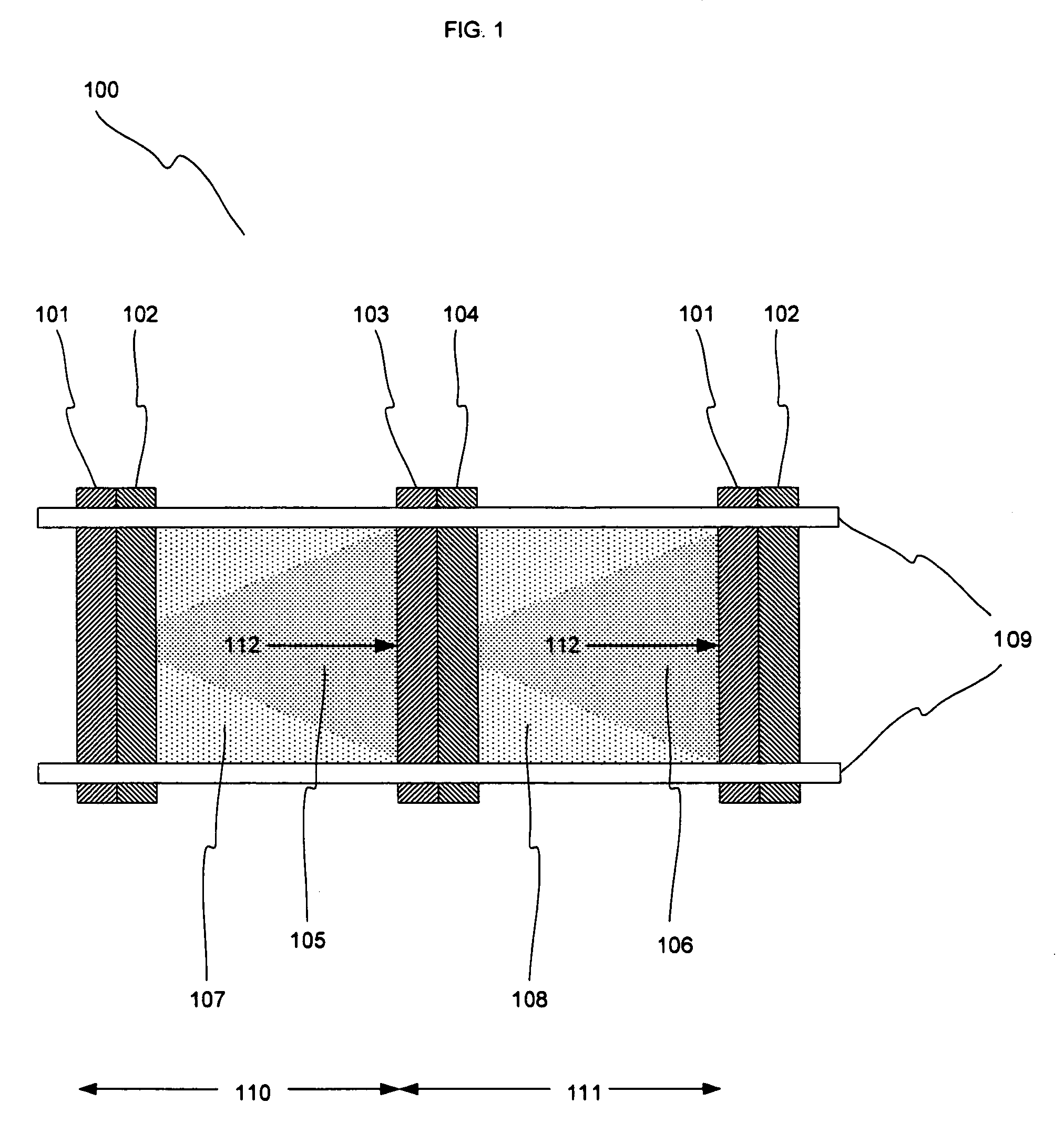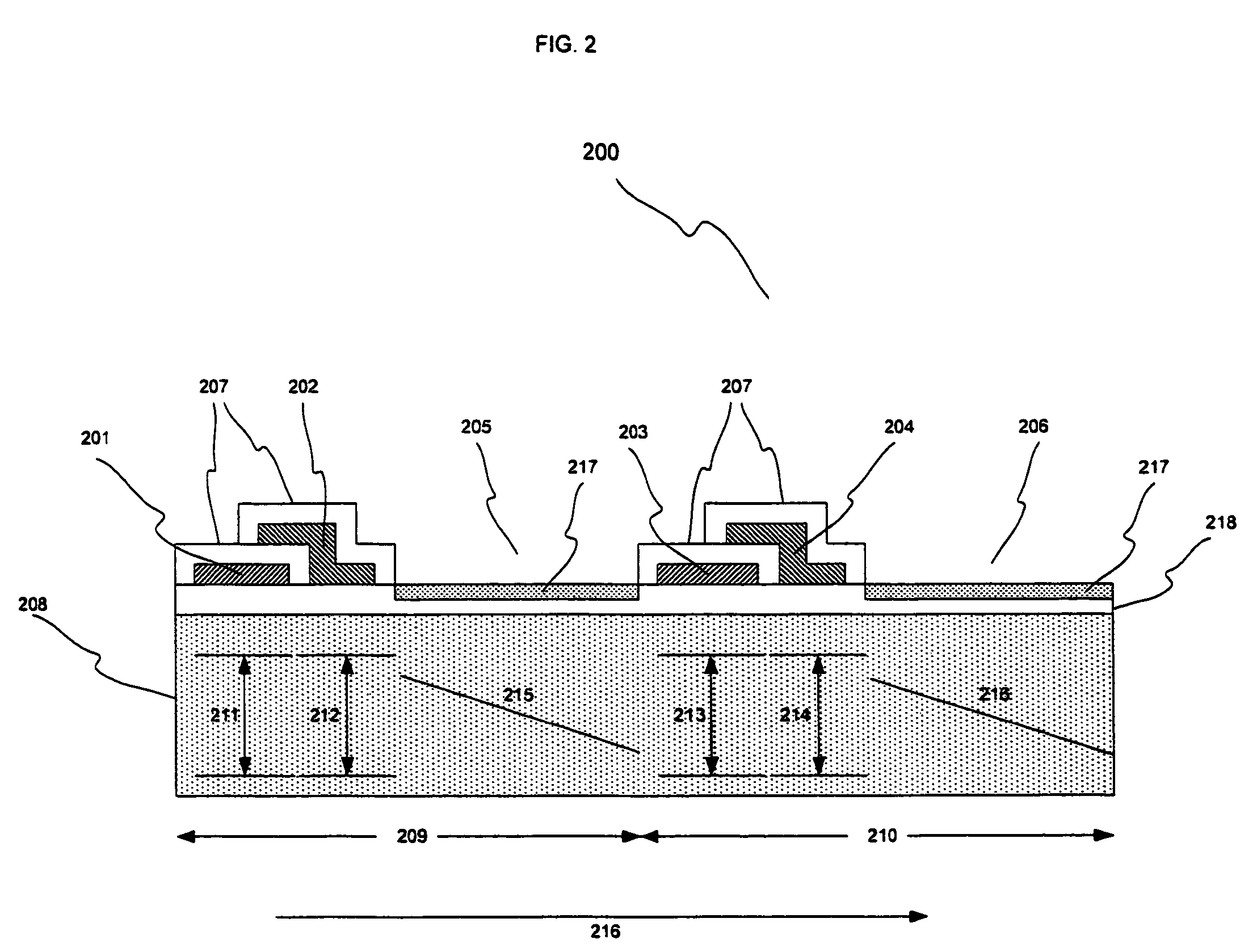Charge coupled device with high quantum efficiency
a charge coupled, high-quantity technology, applied in the direction of radiation controlled devices, semiconductor devices, electrical devices, etc., can solve the problems of poor sensitivity of conventional ccds to short wavelength bands such as blue, uv, soft x-ray, and poor yield, and achieve high quantum efficiency (qe), facilitate high charge transfer efficiency, and high cte
- Summary
- Abstract
- Description
- Claims
- Application Information
AI Technical Summary
Benefits of technology
Problems solved by technology
Method used
Image
Examples
Embodiment Construction
[0025]FIG. 1 provides a top view of a pixel-pair 100 of a six-phase front-illuminated CCD according to one embodiment of the present invention. The pixel-pair 100 comprises two cells 110 and 111 which accommodate charge transfer in a direction 112 from cell 110 to cell 111. A plurality of pixel-pairs 100 may form a CCD array with additional circuitry such as parallel and serial shift registers, charge amplification blocks and so on, as is known in the art. Pixel-pair 100 includes four independently controlled gates 101, 102, 103 and 104 that are formed from conductive material such as but not limited to polysilicon or transparent material such as indium-tin-oxide (ITO). The potential energy within the silicon regions is controlled by these gates via six-phase timing that will be further detailed in FIG. 3. Pixel-pair 100 further includes window regions 107 and 108 through which wide a band of photons can be sensed by the photosensitive silicon beneath it, thus providing very high QE...
PUM
 Login to View More
Login to View More Abstract
Description
Claims
Application Information
 Login to View More
Login to View More - R&D
- Intellectual Property
- Life Sciences
- Materials
- Tech Scout
- Unparalleled Data Quality
- Higher Quality Content
- 60% Fewer Hallucinations
Browse by: Latest US Patents, China's latest patents, Technical Efficacy Thesaurus, Application Domain, Technology Topic, Popular Technical Reports.
© 2025 PatSnap. All rights reserved.Legal|Privacy policy|Modern Slavery Act Transparency Statement|Sitemap|About US| Contact US: help@patsnap.com



